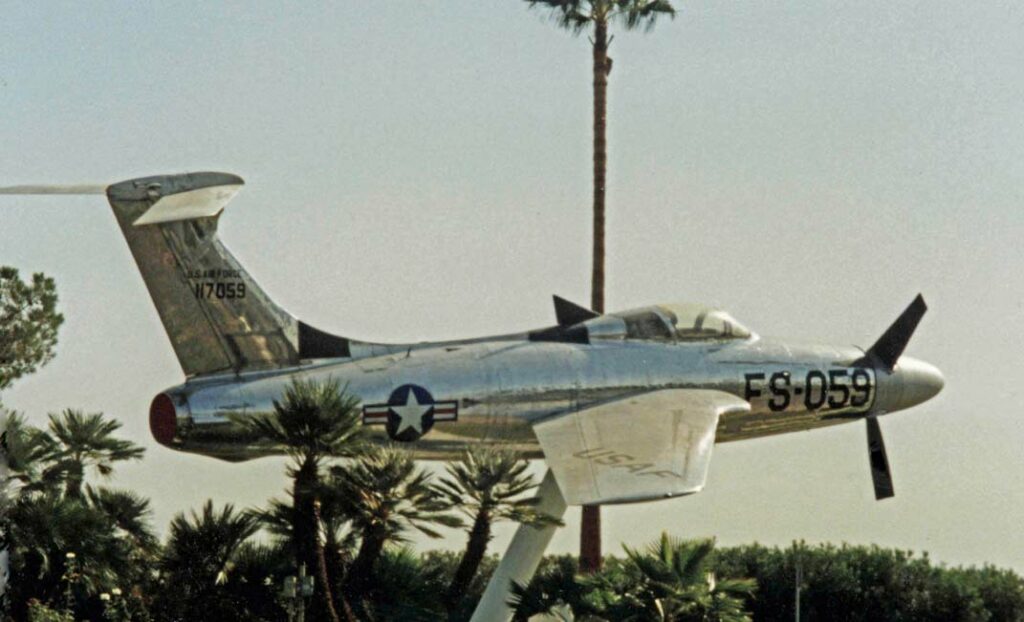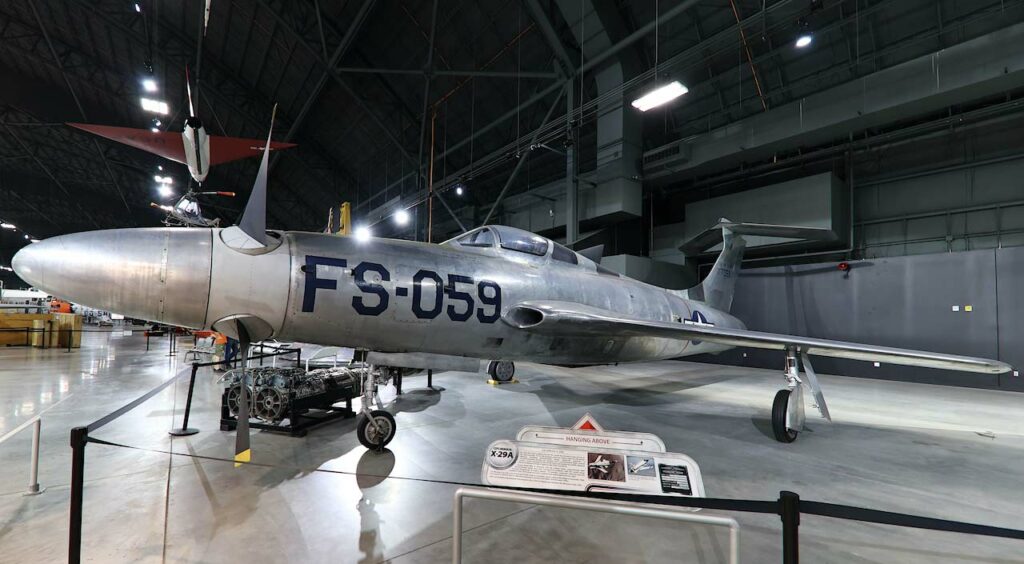The Republic XF-84H Thunderscreech, an experimental turboprop fighter, notorious for its loudness and designed for supersonic speeds with a unique propeller system. The Republic XF-84H Thunderscreech stands out in aviation history as one of the most audacious attempts to create a high-speed turboprop fighter during the 1950s.

History of the Development of the Republic XF-84H Thunderscreech:
Developed in the early 1950s, the XF-84H was part of the United States Air Force’s exploration into combining jet and turboprop technologies. The project, led by Republic Aviation, aimed to create an aircraft that could achieve supersonic speeds in level flight, a feat not typical for propeller-driven planes. The XF-84H first flew on July 22, 1955. It did not have a NATO nickname, as it remained an experimental prototype and was not standardized for NATO use.
Design of the Republic XF-84H Thunderscreech:
The XF-84H’s design was based on the F-84 Thunderjet, but with significant modifications. It featured a wingspan of 11.3 meters (37 feet) and a length of 15.85 meters (52 feet). The most notable feature was its large, supersonic propeller, powered by an Allison XT40-A-1 turboprop engine, producing 5,850 shaft horsepower.
The aircraft incorporated a unique blade design intended to operate at supersonic speeds, but this resulted in an extraordinarily loud noise, causing physical discomfort and even nausea for ground crews. Despite its innovative design, the XF-84H faced challenges in stability and engine reliability.
Performance of the Republic XF-84H Thunderscreech:
In terms of performance, the XF-84H was ambitious but problematic. It was designed to reach speeds close to Mach 1, but in reality, it achieved a top speed of around 834 km/h (518 mph). Its operational altitude and range were limited due to the experimental nature of the aircraft.
When compared to contemporary fighter jets like the F-86 Sabre, the XF-84H fell short in terms of reliability and overall performance. Its unique propeller system did not provide the expected advantages over traditional jet engines.

Military Use and Combat of the Republic XF-84H Thunderscreech:
The XF-84H never saw combat or extensive military use. Its development was plagued by mechanical failures and the deafening noise it produced, which limited its testing phase. The aircraft underwent a series of test flights, but these were marked by frequent technical issues and an inability to meet its design goals.
There were no competing aircraft of a similar design, as the XF-84H occupied a unique niche in aviation experimentation. It was not sold to other countries or adopted for operational use by the military, and the project was eventually abandoned.
The Republic XF-84H Thunderscreech, while an ambitious engineering endeavor, ultimately remained a footnote in aviation history. Its attempt to push the boundaries of turboprop technology demonstrated both the potential and limitations of combining propeller and jet propulsion. The XF-84H’s legacy lies in its contribution to research in aircraft propulsion and aerodynamics, despite its failure to become a practical military fighter.
Back to the experimental aircraft section.